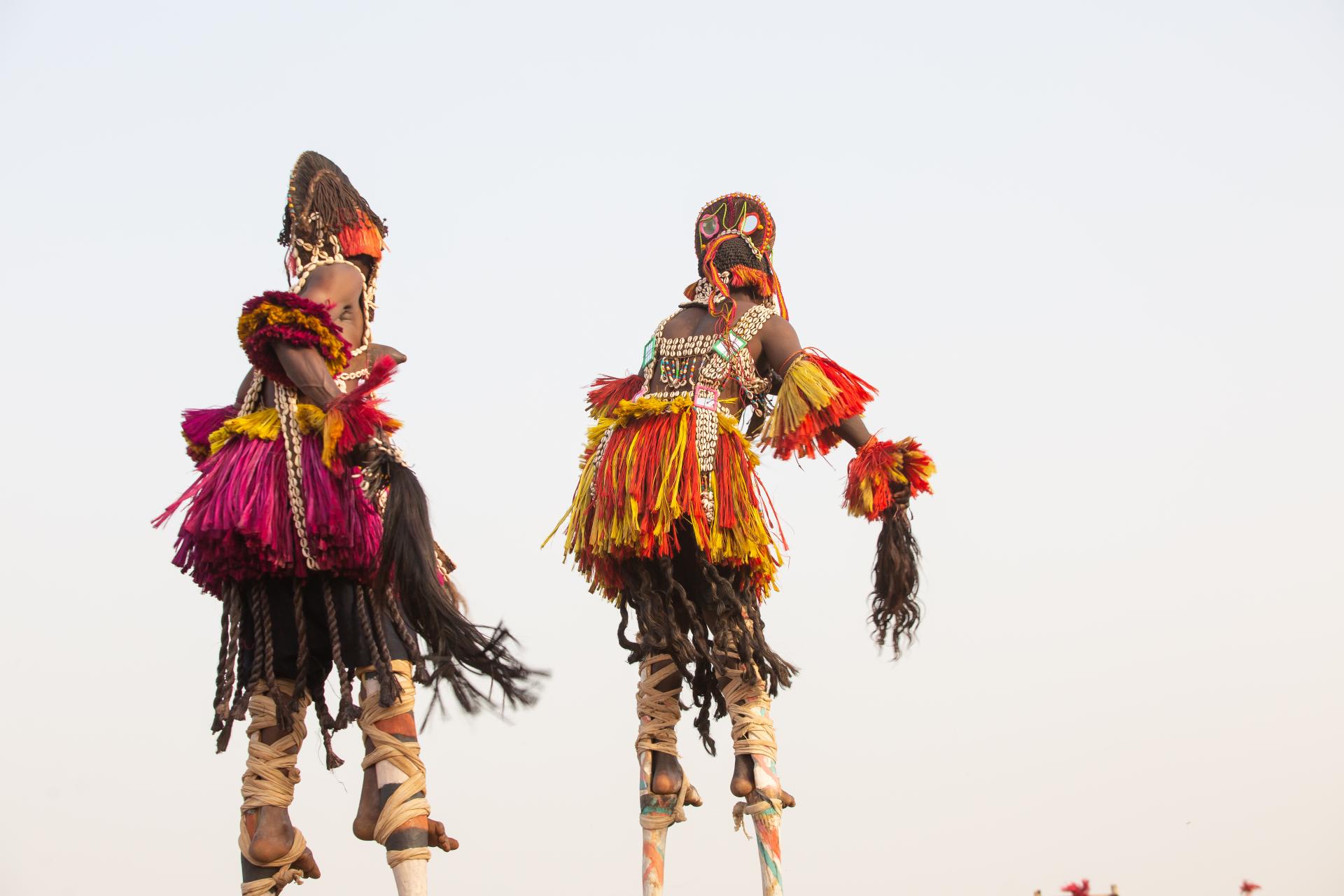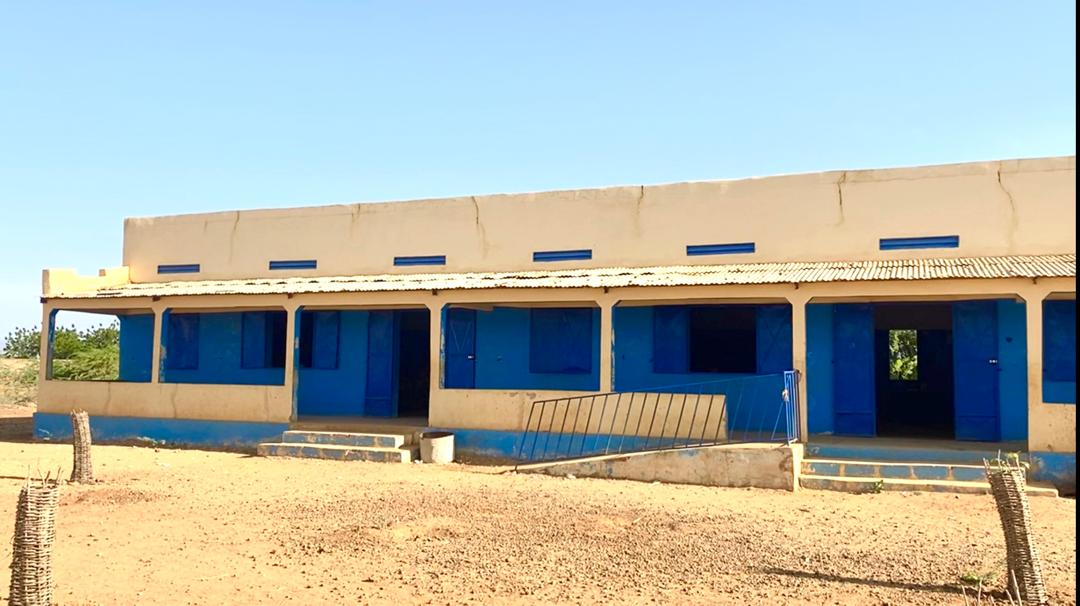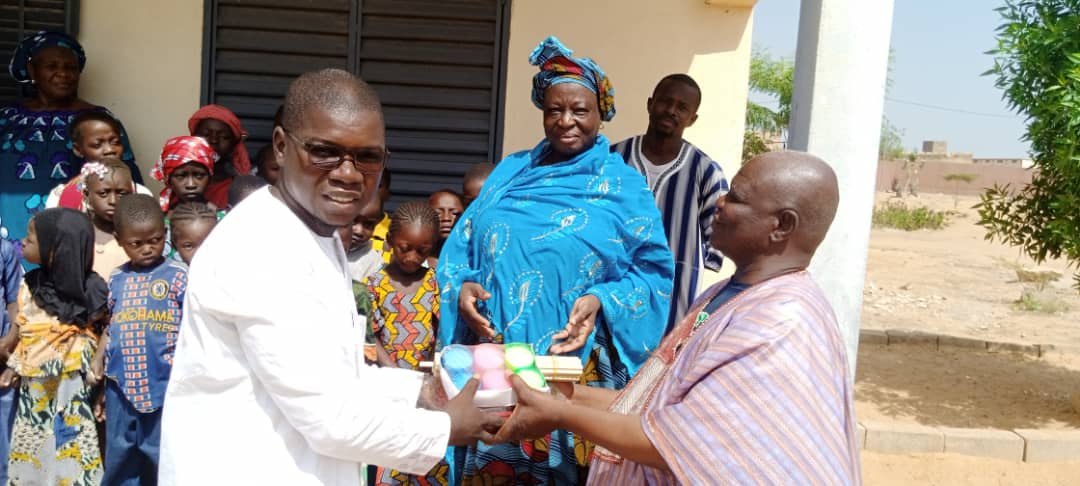
By Georges Dougon (Dogon, CS Staff)
The Dogons are Indigenous Peoples of central Mali in the Bandiagara region, famous for their rich culture and cosmogony. Predominantly settled on the Bandiagara cliffs, they have developed a unique way of life closely connected to their natural environment. Their society is organized around clans and lineages, and their beliefs place particular importance on ancestors and nature. Dogon art, particularly masks and sculptures, is known worldwide for its beauty and profound symbolism. Their traditional villages and initiation ceremonies bear testimony to an ancestral tradition that continues to inspire and fascinate. The Dogon region was inscribed on UNESCO's World Heritage List in 1989, thanks to its spectacular landscapes, majestic cliffs, and cultural richness embodied by the Dogon People, testifying to their resilience in the face of the challenges of modernity.
Education among the Dogons is deeply rooted in their traditions and culture. Traditional education begins at an early age, with children learning the knowledge, values, and mythology of their people through oral transmission. They participate in daily activities such as farming and handicrafts, learning by observation and practice. Initiation ceremonies play a crucial role in the education of young people, marking their transition to adulthood and integration into Dogon society. One of the most important of these rituals is the Sigui, which is held once every 60 years and lasts for 7 years, teaching young men about Dogon traditions, including circumcision, as well as cosmology and history.

Traditional Dogon education is characterized by several factors, not least its holistic approach. Dogon education is not limited to the acquisition of knowledge; it also includes the transmission of values, etiquette, and traditional beliefs. Added to this is experiential education, as children learn by observing adults and participating in the daily activities of the community. For example, to initiate children into farming techniques, all farming implements are made in miniature and the youth follow their Elders as they learn these techniques. The natural environment is a central element of education, as children learn about plants, animals, and natural phenomena. Nature is also their source of medicine and knowledge. The third aspect of traditional Dogon education is initiation, which marks the key stages of life. It is also the moment when children learn about their responsibilities and social status within the community.

The arrival of the colonial education system had a devastating impact on the traditional Dogon education system. Colonial schools denigrated the knowledge transmitted by the Elders in favor of western knowledge, which was considered superior. It also contributed to separating the Dogon from their natural environment; most of the time, children were forced to live in boarding schools far from their villages and natural surroundings. Despite the legacy of colonialism, however, traditional schooling has made significant progress, notably with the creation of community schools, which enable a greater number of children to access traditional education. The integration of the community members into the school management committee and the inclusion of local languages in learning means that pupils can learn subjects such as math and biology in the Dogon language. This offers young people the opportunity to open up to the world while remaining connected to their culture and ancestral values.
Since 2012, Mali has been going through a multidimensional crisis that has had a lasting impact on the lives of its inhabitants, particularly women and children. According to UNICEF, there are over 375,000 Internally Displaced People, and more than 1,500 schools are closed or non-functional due to security issues. In the Bandiagara region, out of 765 schools, almost 300 remain closed, seriously affecting the lives of children. Thousands of children in the streets of Bandiagara who have been forced to move to larger towns to avoid massacres dream of returning to their village school. These children, often kidnapped and forcibly recruited, are exposed to radicalization by terrorist groups occupying their villages and deprived of their rights and culture.

The situation is alarming: the rich Dogon cultural heritage is losing its values and its traditional educational system. School buildings have been transformed into dormitories and hostels. Separated from their natural habitats, Dogon children are condemned to live far from their environment, which is a key element of both traditional and modern education. This shatters the dreams of these young people, for whom learning has become a distant memory. Separated from their loved ones, their villages, and the land of their ancestors from which they never left, they will no longer know about the cultural practice of Adjiri (traditional wrestling), harvest festivals, their Ginna (ancestor's first home or the big family), and many other traditions.
This conflict, the origin of which they don't know, has shattered their dream of becoming leaders of this country and contributing to the development of their communities by offering health care, education, and self-determined advocacy within institutions. Despite the initiatives and efforts of the government, NGOs, and community organizations, the education situation remains a major concern and deserves serious attention. Far from their lands, thousands of children today face a loss of knowledge and a deprivation of the opportunity to serve their Indigenous community and continue to safeguard their ancestral knowledge.
Top photo by Tidiane Ouedraogo.


